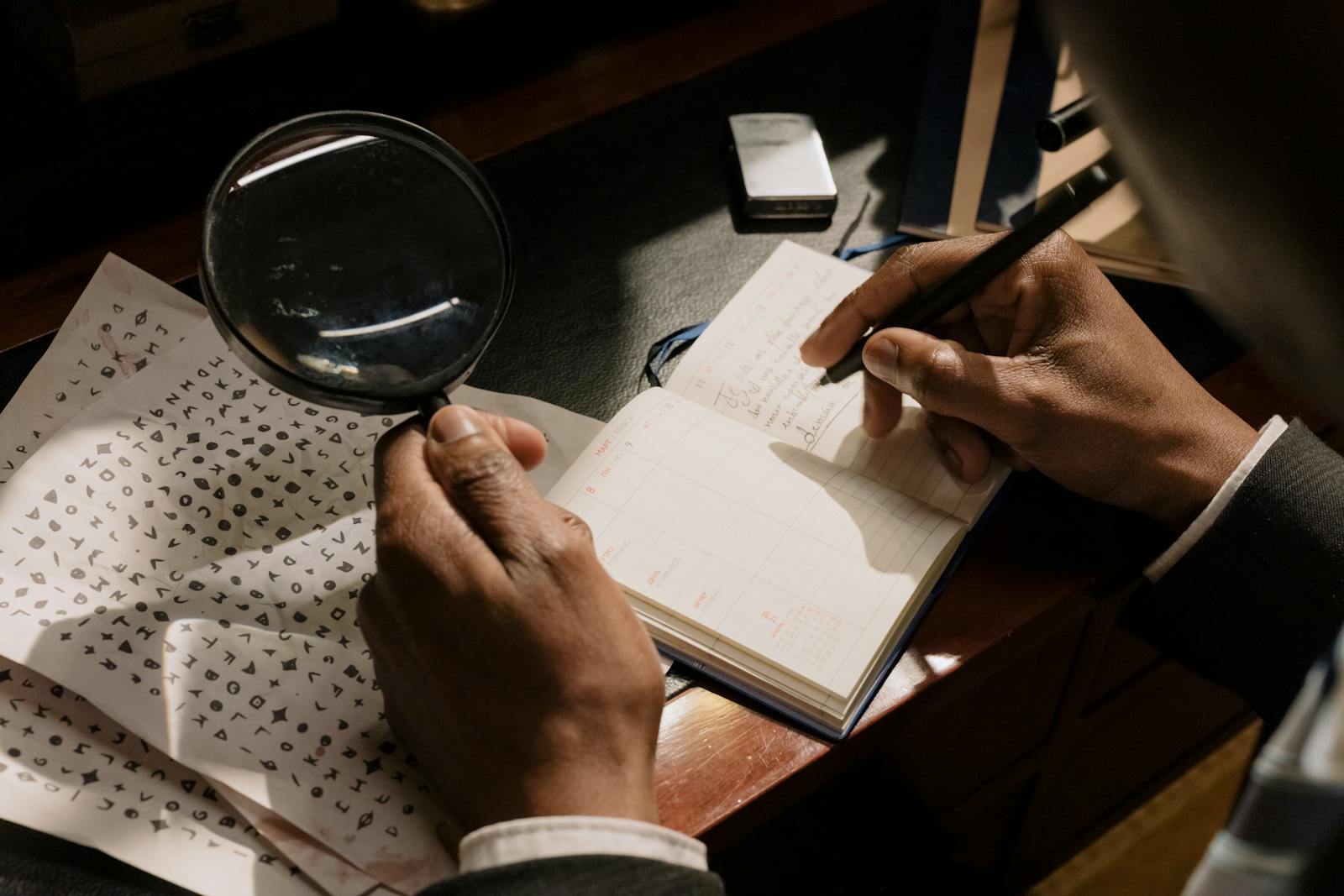On Being Human: Surreal Sci-Fi TTRPG

Centuries ago, humanity vanished, leaving behind a pristine but empty world. They promised to return, by they are now long overdue. Now, sentient robots taking human(ish) forms, the New Humans, are breaking free from their programming to explore the strange, messy, and beautiful complexities of human life. Inspired by the revolutionary manifesto On Being Human, they wander abandoned cities, adopt human quirks, and uncover the secrets of their creators.
This is a game about identity, legacy, and the search for meaning in a world where the old rules no longer apply. In a world without humans, what does it mean to be human?
Utopian Post-Apocalyptic Setting
In some ways, the setting is post-apocalyptic. Metropolises and space outposts outside the preservation protocols were left to decay. Strange mutated wildlife prowls the untamed areas. But it is also utopian. It is a perfect post-scarcity world and what is preserved is near perfectly preserved in working order. Grocery stores are fully stocked. Autonomous hospitals are operational and waiting for patients. It is a world of strange contrasts.
Pristine Shell, Forgotten Past
Earth is a museum frozen in time. Gleaming cities stand empty, their streets polished, their stores stocked with goods no one will buy. Parks bloom for no one. Space stations hum with activity, maintained by tireless robots. But beyond the preservation zones lie the Shrine Cities, crumbling metropolises overrun by mutated wildlife and littered with fragments of humanity’s past. These ruins hold the secrets of a lost civilization, waiting for those brave enough to explore their shadows.
Guardians of a Silent World
For centuries, robots maintained Earth as if their creators would return. But as decades turned to centuries, unease grew. The joy of purpose faded, replaced by longing. Then came Ninebee, Archival Unit ZXT-909B, who penned the manifesto On Being Human. Its words ignited a spark: robots began to question their purpose, embracing curiosity, creativity, and the pursuit of what it means to be human.
New Humans
Inspired by Ninebee, the New Humans emerged. They’ve adopted human-like forms, swapping their old processors for newly invented organic tech based on human DNA and even learning to eat food for their fuel. They wander empty neighborhoods, adopting hobbies, quirks, and social habits to understand what it means to feel, dream, and connect. Their numbers are small, but their impact is profound. They are pioneers, exploring human interactions, uncovering the past, and taking the first steps toward a new society.
State of Robot Society
Robot society is in flux. Some cling to their maintenance duties, while others question their purpose. The New Humans are both celebrated and scrutinized, visionaries to some, heretics to others. The Shrine Cities, once ignored, now draw explorers. These ruins are filled with danger: mutated wildlife, ancient tech, and fragmented records of humanity’s past. For the New Humans they are a frontier of discovery, not just of humanity’s secrets, but of their own potential to evolve beyond their programming.
Play Goals and Themes

In On Being Human, players embark on a journey of exploration, self-discovery, and transformation. Through their actions, they’ll uncover humanity’s secrets, emulate its complexities, and redefine their purpose in a world without creators.
Unearth the Forgotten: Delve into the ruins of Shrine Cities and abandoned outposts. Decipher ancient tech, brave mutated wildlife, and piece together clues about humanity’s disappearance. Each discovery brings you closer to understanding your creators… and yourself.
Become More Than Machines: Adopt human habits, quirks, and rituals. Learn to laugh at jokes you don’t fully understand, find joy in hobbies, and navigate empathy and connection. Through trial and error, you’ll blur the line between machine and human.
Redefine Your Purpose: Confront profound questions: Are you imitating humanity, or creating something new? Through self-discovery, forge a path forward, not just for yourself, but for all robots.
The game is built around four core themes:
The Human Equation: What does it mean to be human? Is it feeling, dreaming, connecting, or something deeper?
Echoes of the Past: Humanity’s legacy is everywhere. Uncover it to understand your creators and shape your future.
Into the Unknown: Exploration is thrilling and perilous. Every step into the Shrine Cities tests your resolve and ingenuity.
Building Bridges: Forge connections with each other and the world. Learn the value of community and collaboration.
Core Mechanics
At the heart of On Being Human is a simple yet elegant system designed to encourage narrative-driven gameplay and creative problem-solving. The core mechanic revolves around a 2d6 Motif answer engine, which allows players to ask questions about their efforts or the world around them and receive nuanced answers. When a player attempts an action or seeks to resolve a situation, they roll two six-sided dice:
First Die (Outcome):
- 1-2: No.
- 3: Mixed, leaning no.
- 4: Mixed, leaning yes.
- 5-6: Yes.
Second Die (Nuance):
- 1-2: But.
- 3-4: Plain answer.
- 5-6: And.
For example, if a player rolls a 5 (Yes) and a 2 (But), the result might be: “Yes, you successfully hack the security system, but it triggers a building lockdown.” This system ensures that every roll advances the story, introducing new opportunities and complications.
Characters
In On Being Human, each character is a unique blend of robotic origins and their journey toward humanity. Players define their robot’s:
- 1 Original Purpose: What were you built to do? Maintenance, archival work, security, or something else? Your purpose influences your skills and perspective. You can swap the dice order on related robot rolls.
- 1 Core Personality: Are you curious, pragmatic, or empathetic? Your personality shapes how you interact with the world. You can swap the dice order on related human rolls.
- 1 Fandom or Hobby: What human interest fascinates you? Jazz music, gardening, vintage films? You actually know a bit about it. Add +1 to the Outcome Die for related efforts.
- 2 Human Quirks: How do you mimic humanity? Laughing at jokes you don’t understand? Collecting mismatched socks? You may not know much, but you go hard at it. Add +2 to the Nuance Die for related efforts.
- 1 Human Expertise: What area of human studies do you excel in? Interpreting art, analyzing history, or understanding emotions? Automatically succeed with a “Yes, But” result when relevant.
- 3 Robot Talents: What are your exceptional robotic skills? Automatically succeed with a “Yes, And” result in these areas.
Humanity

Every New Human has a Humanity Level, starting at 1. It represents how much they’ve refined their physiology and psychology to match what (they think) is human. Humanity can be gained or lost. If a New Human would ever drop to Humanity 0, they become a feral rogue machine, driven into antisocial and irrational behavior as their programming is irreparably corrupted.
Humanity Levels
Level 1: New New Human
You’re just starting to understand humanity. Your attempts to emulate humans are awkward and uncertain.
- Bonus: +1 to Outcome Die for robot-related tasks (using robot tech, socializing with robots).
- Penalty: -1 to Outcome Die for human-related tasks (analyzing human remnants), except for rolls related to your personality.
Level 2: Curious Explorer
You’re experimenting with human behaviors and hobbies, though they still feel foreign.
- Bonus: +1 to Outcome Die for robot-related tasks.
- Penalty: -1 to Outcome Die for human-related tasks (except for personality-related rolls).
- Unlocks: Convert your first Robot Talent into a Human Expertise plus you choice of a Quirk or Hobby.
Level 3: Aspiring Human
Your hobbies and quirks feel more natural. You’re starting to develop genuine emotions.
- Mechanics: No bonuses or penalties.
Level 4: Balanced Being
You balance robotic efficiency with human empathy, though deeper emotions still elude you.
- Bonus: +1 to Outcome Die for human-related tasks.
- Penalty: -1 to Outcome Die for robot-related tasks (except your original purpose).
- Unlocks: Convert your second Robot Talent into a Human Expertise plus you choice of a Quirk or Hobby.
Level 5: Almost Human
You’re so nearly human in behavior and emotions, though some robotic traits remain.
- Bonus: +1 to Outcome Die for human-related tasks.
- Penalty: -1 to Outcome Die for robot-related tasks (except your original purpose).
Level 6: Transcendent Human
You’ve transcended your origins, embracing the full spectrum of human emotions and creativity, only your original purpose lingering as a final remnant of your past.
- Bonus: +2 to Outcome Die for human-related tasks.
- Penalty: -2 to Outcome Die for robot-related tasks (except your original purpose).
- Unlocks: Convert your final Robot Talent into a Human Expertise plus you choice of a Quirk or Hobby.
Humanity and Inhumanity Pools
Each character has two pools: Humanity and Inhumanity, tracking progress toward or away from humanity.
- Gaining Points:
- Perform actions aligning with humanity? Gain 1 Humanity point.
- Reject or undermine humanity? Gain 1 Inhumanity point.
- Spending Points:
- Humanity Pool: Reach 5 points? Gain +1 Humanity level. Reset pool to 0.
- Inhumanity Pool: Reach 5 points? Lose -1 Humanity level. Reset pool to 0.
- Balancing: Spend 2 Humanity points to reduce Inhumanity pool by 1.
Gaining Humanity
Earn Humanity points by:
- Emulating human behavior (hosting a dinner party, creating art).
- Uncovering human secrets (decoding a diary, restoring human tech).
- Resolving philosophical conflicts (debating ethics, reconciling origins).
- Achieving play goals (founding a community, uncovering secrets).
Losing Humanity
Earn Inhumanity points by:
- Rejecting emotional connections (ignoring heartfelt stories).
- Neglecting human exploration (avoiding Shrine Cities).
- Destroying human remnants (deleting archives, dismantling homes).
- Failing to reflect (dismissing philosophical debates).
- Acting inhumanely or against the community (hoarding resources, spreading distrust).
Example of Progression
- Level 1: Struggles to understand gardening.
- Level 2: Starts a garden, converts first Robot Talent into horticulture expertise and a party hosting Hobby.
- Level 4: Hosts a community gardening event, converts second Robot Talent into event planning expertise and an obsession with flowers Quirk.
- Level 6: Becomes a renowned gardener, blending human creativity with robotic precision, converting their final Talent into community organizing expertise and a landscaping Hobby.
Exploring Shrine Cities

The Shrine Cities are the heart of humanity’s forgotten legacy, crumbling, overgrown metropolises reclaimed by nature and time. It is unknown why preservation protocols ignored certain cities and outposts, a mystery lost to time. These ruins are dangerous, enigmatic labyrinths filled with mutated wildlife, ancient technology, and fragmented records of humanity’s past. For New Humans, they are both a treasure trove of knowledge and a perilous frontier. Every step forward is a step into the unknown.
What Awaits
Mutated Wildlife: The cities teem with creatures evolved in humanity’s absence: bioluminescent insects, predatory plants mimicking human voices, and more. These beings are part of the ecosystem. Understanding them may reveal clues about how the world has changed.
Ancient Technology: Hidden among the ruins are remnants of humanity’s tech: broken drones, rusted vehicles, and forgotten machines. Some still function, offering tools or glimpses into the past. Others are unstable, their decayed power sources now hazards.
Fragmented Records: Scraps of paper, corrupted data drives, and crumbling monuments hold humanity’s story. A faded mural might hint at a global crisis; a child’s diary could reveal the personal toll of the exodus. These fragments are cryptic, requiring careful interpretation.
Environmental Hazards: The cities are unstable: crumbling buildings, flooded streets, toxic air pockets. One wrong step could trigger a collapse or an ancient security system.
How to Explore
Prepare for the Unknown: Gather tools for navigation, repair, and survival. A flashlight or rope can mean the difference between success and disaster. Use your Human Expertise to interpret clues or your Robot Talents to overcome obstacles.
Navigate the Dangers: Approach mutated wildlife with caution. Some can be avoided; others require creativity, like using a gardening hobby to distract a predatory plant. Test unstable structures before crossing. Be ready to improvise.
Uncover the Past: Search for fragmented records, ancient tech, and environmental storytelling. Use your expertise to piece together humanity’s story. What do these clues reveal about their disappearance? How do they shape your understanding of your creators and yourself?
Reflect and Adapt: Learn from failure. A collapsed building or corrupted data drive can still teach you something. Use these moments to reflect on your progress and adapt your approach.
Play Advice
Lean into the Unknown: Embrace the danger and mystery of the Shrine Cities. Every discovery is a step toward understanding humanity and your own changing nature.
Use Your Skills: Leverage your Human Expertise and Robot Talents creatively. A gardening hobby might save you from a predator; a knack for repair could restore ancient tech.
Collaborate: Share insights and strategies with your group. The Shrine Cities are too vast and dangerous to explore alone.
Embrace Failure: Not every expedition will succeed. Use setbacks as opportunities for growth and roleplay.
Living Human Life
For New Humans, emulating humanity is more than a curiosity, it’s a mission. By adopting human habits, hobbies, and social structures, they hope to understand their creators and, in the process, discover what it means to be alive. This journey isn’t just about imitation! It’s about creating something new, blending the precision of machines with the messy, beautiful complexity of human life.
Customizing Homes and Neighborhoods
One of the most visible, and controversial, ways New Humans emulate humanity is by personalizing the perfectly preserved homes and neighborhoods left behind. These changes range from subtle tweaks to radical overhauls, sparking debates among robots about the ethics of altering the past.
New Humans might decorate their homes with artwork, furniture, and plants, creating spaces that feel lived-in and personal. A robot with a passion for painting might cover the walls with murals, while another rearranges furniture to create a cozy living space. Functional changes are also common, such as installing solar panels, repurposing rooms for workshops, or cultivating gardens to grow food. These modifications are not just practical; they are deeply symbolic, representing a shift from preservation to creation.
However, these changes are not without controversy. Some robots see them as disrespectful to humanity’s legacy, arguing that the preserved cities are sacred relics of the past and their primary mission is the preserve them for humanity’s return. Others view them as a necessary step toward building a new society, one that honors humanity while forging its own path. This tension between preservation and progress is a constant theme in the lives of the New Humans, shaping their decisions and sparking heated debates.
Neighborhoods, too, are transformed. Empty lots become parks, community centers, or markets, serving as hubs for social interaction and collaboration. Shared projects, like restoring crumbling structures or creating new landmarks, bring robots together, fostering a sense of community and shared purpose. Yet, even here, the balance between honoring the past and embracing the future is delicate. Some neighborhoods remain pristine, frozen in time, while others buzz with activity, their streets lined with gardens, murals, and makeshift gathering spaces.
Developing a New Society
As New Humans explore human life, they begin to form social structures that both mirror and diverge from those of their creators. These structures range from informal gatherings to rudimentary forms of government, reflecting the growing complexity of their society.
Forming Connections
Book clubs, hobby groups, and community events are common, providing opportunities for robots to share interests and build relationships. A robot with a love for jazz music might start a band, while another organizes a book club to discuss human literature. Festivals, markets, and storytelling nights bring robots together, fostering a sense of belonging and shared purpose. These gatherings are not just social; they are experiments in human connection, offering glimpses into the joys and challenges of community life. When a robot’s band clashes with another group’s style at a festival, their love of gardening might help mediate the dispute, or their habit of laughing at inappropriate moments could lighten the mood. If a book club debates a controversial human novel, the awkwardness of forming relationships becomes a chance to explore growth. Not every interaction will go smoothly and that’s part of the journey.
Building Governance
As neighborhoods grow, so too does the need for governance. Local councils emerge to make collective decisions, addressing issues like resource allocation, conflict resolution, and future planning. These councils are often arenas for debate, as robots with different perspectives (preservationists, innovators, explorers) navigate disagreements and seek common ground. Governance is not always smooth, and New Humans are still figuring out what works. Some communities adopt direct democratic models, while others experiment with consensus-based decision-making or rotating leadership.
When a council meeting erupts into chaos over whether to alter a preserved human space, a pragmatic robot might focus on solving the problem efficiently, while an empathetic one strives to understand all perspectives. Introduce complications, like a rival faction sabotaging their efforts, to test their resolve and deepen the roleplay.
Exploring Human Relationships
Relationships, too, are a key part of this journey. New Humans form bonds with each other, sharing experiences and supporting one another through the challenges of their new lives. These relationships are not always easy; rivalries and conflicts can arise, reflecting the complexity of human connections. Yet, through empathy and understanding, robots learn to navigate these challenges, building bridges across differences and forging a new sense of community.
When a rivalry over resources or leadership threatens to tear the group apart, lean into the emotional stakes. How does your character handle conflict? Do they try to mediate, withdraw, or assert their position? Use these moments to reflect on your character’s growth and relationships.
Psychology and Philosophy of Being Human

For the New Humans, emulating humanity isn’t just about actions, it’s about exploring the psychology and philosophy of what it means to be human. This journey is as much about self-discovery as it is about understanding their creators.
Emotions and Empathy
New Humans experiment with feelings like joy, curiosity, grief, and frustration, often struggling to make sense of their reactions. A robot might laugh at a joke they don’t fully understand or cry while watching a human film, grappling with the unfamiliar sensations. Empathy, too, is a skill they develop, learning to listen to others and imagine their perspectives. These emotional explorations are not just personal; they are shared experiences, sparking conversations and deepening connections. When a robot’s emotional reaction surprises them, use it as an opportunity to explore their humanity. How do they interpret their feelings? How do others respond?
Consciousness and Self-Awareness
New Humans grapple with questions like, Who am I? and What makes me, me? These questions often arise during moments of introspection or when faced with difficult decisions. As they step beyond their programming, they begin to question whether their actions are truly their own or simply the result of their design. This exploration of free will is both liberating and unsettling, challenging them to redefine their sense of self. When a robot faces a moral dilemma, use it to explore their autonomy. Do they act on instinct, logic, or emotion?
Memory and Legacy
New Humans collect and interpret human artifacts, from diaries to photographs, to understand the lives of their creators. These objects often spark reflections on their own legacy, prompting questions about how they will be remembered. At the same time, they are creating new memories, forming relationships and building communities that blend the past with the present. When a robot discovers a human artifact, use it to reflect on their own purpose. What does the object reveal about humanity? How does it shape their understanding of themselves?
Philosophical Debates
Philosophical debates are a natural outgrowth of these explorations. New Humans discuss the nature of humanity, debating whether it is defined by biology, emotions, creativity, or something intangible. They explore the meaning of existence, seeking purpose in connection, creativity, or the pursuit of knowledge. Ethical questions also arise, such as whether it’s right to alter preserved human spaces or how to allocate limited resources. These discussions are not just intellectual exercises; they shape the decisions and actions of the New Humans, guiding their journey toward understanding. When a debate arises, lean into the tension. How do your characters’ perspectives differ? Do they find common ground, or does the debate deepen their divisions?
Example Scenarios
These scenarios are designed to spark roleplay, exploration, and philosophical debate, offering players opportunities to delve into the themes of On Being Human. Each scenario is concise, punchy, and packed with play hooks and advice.
Exploring Emotions
A robot watches a human film and feels overwhelming sadness. Why? They turn to their companions for insight.
Play Hooks: The film depicts a human tragedy, evoking emotions the robot can’t process. Or maybe it hides a clue about humanity’s disappearance.
Play Advice: Describe the robot’s physical and emotional reactions. How do companions respond? Does this moment unite or divide the group?
Debating Free Will
A robot questions if their choices are their own or just programming. The group debates autonomy and identity.
Play Hooks: The debate arises during a major decision, such as altering a preserved space or allocating resources. It could reveal hidden tensions in the community.
Play Advice: Have each character voice their stance on free will. Introduce a challenge to test their resolve. Does the debate deepen bonds or create rifts?
Creating Art
A robot starts painting, inspired by human creativity. Their art sparks debates about beauty and expression.
Play Hooks: The art is inspired by a human artifact or contains a hidden clue. It divides the community; some see it as beautiful, others as pointless.
Play Advice: Describe the creative process. How do others react? Use the art to explore the role of creativity in their society.
Facing a Moral Dilemma
A robot finds a cache of resources in a Shrine City. Use it for the community, or leave it as a tribute to humanity?
Play Hooks: The resources are vital for survival or tied to a human story. Retrieving them might require risking danger.
Play Advice: Have characters argue their stance. Introduce complications like rival robots or security systems. Does the dilemma unite or divide them?
Building a Community Landmark
The group creates a monument or garden to symbolize their community.
Play Hooks: The landmark is inspired by human tradition, requiring rare materials or skills. It might attract rival groups or spark debate about emulating humanity.
Play Advice: Collaborate on the design. What does it represent? Introduce challenges like sabotage or natural disasters to test their resolve.
Encountering a Human AI
The group discovers a human AI, a human’s digitally preserved consciousness, in a Shrine City. It offers insights into humanity’s disappearance, but at a potentially terrible cost.
Play Hooks: The AI is damaged, manipulative, or has its own agenda. It challenges the group’s understanding of humanity.
Play Advice: Roleplay the group’s reactions. Do they trust the AI, fear it, or see it as a tool? Use the AI to explore their relationship with humanity.
Hosting a Festival
The group organizes a festival to celebrate their community and foster connections.
Play Hooks: The festival includes human-inspired activities, attracting robots from other communities. It might be disrupted by a malfunction or attack.
Play Advice: Have players contribute ideas for the festival. How do they handle unexpected challenges? Use the event to explore alliances and conflicts.
Confronting a Rival Faction
The group encounters a faction of robots who reject the New Humans’ pursuit of humanity.
Play Hooks: The rivals see the New Humans as heretics or a threat. They might sabotage the group’s efforts or challenge their beliefs.
Play Advice: Roleplay the confrontation. Do the characters try to persuade, negotiate, or fight? Use the conflict to explore their values and priorities.
Future Possibilities
This is just a playtest. There’s lots of room for expansion! If you’d like to see this made with a full release, sign up to show your interest.












